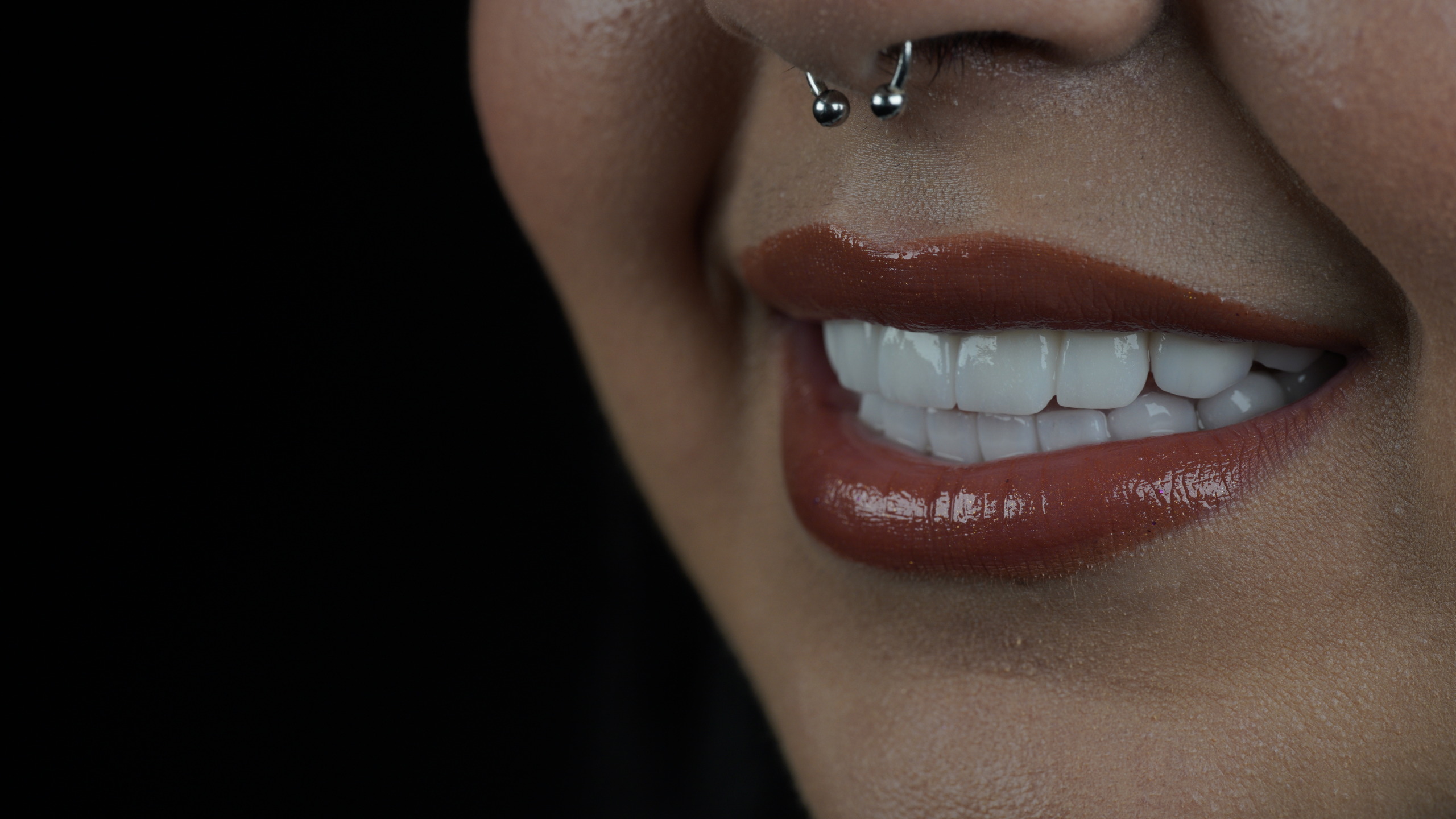Gum Graft Surgery Restoring Healthy Smiles
Gum graft surgery is a procedure that restores healthy gum tissue, gum recession, and enhances smiles by covering exposed tooth roots.

Gum graft surgery, also known as gum tissue grafting or periodontal plastic surgery, is a dental procedure aimed at restoring and improving the health and appearance of gum tissue. This gum graft surgery is commonly performed to treat gum recession, where the gum tissue pulls away from the teeth, exposing the roots. In this article, we will delve into the details of gum graft surgery, its benefits, and what to expect during and after the procedure.

What Is Gum Graft Surgery?
Dental implant surgery for gum graft is a procedure that replaces tooth roots with metal, screw-like posts and replaces damaged or missing teeth with artificial teeth that look and function much like real ones.
Dental implants can offer a welcome alternative to dentures or bridgework that doesn’t fit well and can offer an option when a lack of natural teeth roots doesn’t allow building dentures or bridgework tooth replacements. One of the biggest advantages of dental implants is that they preserve natural gum tissue by avoiding the need to cut down adjacent teeth for conventional bridgework.
Dental implants also help preserve bone, significantly reducing bone resorption and deterioration that results in loss of jawbone height. Dental implants are intimately connected with the gum tissues and underlying bone in the mouth.
Since dental implants integrate with your jawbone, they help keep the bone healthy and intact. In the long term, a dental implant can be more esthetic and easier to keep clean than a bridge. Dental implants are a durable and long-lasting solution to tooth loss.
Common Reasons for Gum Graft Surgery
Gum graft surgery is often necessary for treating gum recession, a condition where the gums pull away from the teeth, leaving the roots exposed and susceptible to sensitivity and decay. This procedure is also beneficial for improving the appearance of the gum line and enhancing the overall aesthetics of the smile.
Additionally, it helps in preventing further gum recession and the potential damage it can cause to the teeth and jawbone. For individuals experiencing sensitivity due to exposed roots, gum graft surgery can offer relief. In some cases, this surgery is essential for creating a stable foundation for dental implants. Overall, gum graft surgery is not only a key procedure for restoring oral health but also plays a significant role in maintaining the longevity and appearance of one’s teeth.
Types of Gum Grafts
Gum grafts, also known as gingival grafts, are dental procedures used to treat gum recession and related issues. There are several types of gum grafts, each suited for specific conditions and patient needs. The main types include:
- Connective Tissue Grafts: The most common type of gum graft. It involves removing a piece of tissue from the roof of the mouth (palate) and attaching it to the affected gum area to cover exposed tooth roots.
- Free Gingival Grafts: Similar to connective tissue grafts, but instead of subepithelial tissue, a small amount of tissue is taken directly from the palate and then attached to the gum area. This method is often used for people with thin gums who need extra tissue to enlarge the gums.
- Pedicle Grafts: In this type, the graft is taken from the gum tissue around or near the affected area. A flap (pedicle) is partially cut away and moved sideways to cover the exposed root. This method is typically used for patients who have plenty of gum tissue near the tooth.
- Acellular Dermal Matrix Allografts: This involves using medically processed, donated human tissue as a grafting material instead of taking tissue from the patient’s palate. This method is often chosen for its comfort and because it avoids the need for a donor site in the patient’s mouth.
- Lateral Grafts: These are used when there is sufficient gum tissue available in the adjacent areas. Tissue is taken from the side of the affected area and moved over or rotated to cover the exposed roots.
- Coronally Positioned Flap: This is not a graft but a surgical technique where the existing gum tissue is moved upward (or coronally) to cover the exposed roots.
The choice of graft depends on the individual’s specific dental condition, the extent of gum recession, and the patient’s overall oral health. A dental professional can provide the best recommendation based on a thorough examination.

Gum Graft Aftercare
Gum graft surgery can be an effective solution for treating gum recession and enhancing your oral health. However, a crucial aspect of the success of this procedure lies in the aftercare and recovery process. In this article, we will explore essential steps and tips for gum graft aftercare to ensure a smooth and successful recovery.
- Follow Post-Operative Instructions: After your gum graft surgery, your periodontist or dentist will provide you with specific post-operative instructions. These instructions are tailored to your case and are essential for a successful recovery. It’s crucial to follow them diligently.
- Maintain Good Oral Hygiene: Proper oral hygiene is vital during the recovery period. However, you should avoid brushing or flossing the treated area until your dentist gives the green light. In the meantime, you can use an antimicrobial mouthwash as recommended by your dentist to keep the surgical area clean.
- Soft Diet During Healing: For the first few days following gum graft surgery, it’s advisable to stick to a soft diet. Avoid hard, crunchy, or spicy foods that could irritate the surgical site. Opt for smoothies, yogurt, mashed potatoes, and other soft, easy-to-chew options.
- Manage Discomfort: Some discomfort and swelling are common after gum graft surgery. Your dentist may prescribe pain medication to manage pain. Applying an ice pack to the outside of your face for short intervals can also help reduce swelling.
- Rest and Avoid Strenuous Activities: Rest is essential during the initial days of recovery. Avoid strenuous activities and exercise, as this can increase blood flow and potentially disrupt the healing process.
- Stay Hydrated: Drinking plenty of water is important to stay hydrated and aid in the
- Avoid Smoking and Alcohol: Smoking and alcohol can hinder the healing process and may healing process. Proper hydration supports overall health and can contribute to a smoother recovery. Increase the risk of complications. It’s best to refrain from these habits during the recovery period.
- Attend Follow-Up Appointments: Make sure to attend all scheduled follow-up appointments with your dentist or periodontist. These appointments are crucial for monitoring your progress and ensuring that the graft is healing as expected.
- Be Patient: Gum graft surgery recovery takes time. It may take several weeks for the grafted tissue to fully integrate and for you to experience the full benefits of the procedure. Be patient and trust the process.
- Maintain Regular Dental Check-Ups: Even after you have fully recovered, it’s important to continue with regular dental check-ups and cleanings. This will help prevent gum recession from returning and maintain your improved oral health.
In conclusion, gingival grafting can significantly benefit your oral health, but proper aftercare is essential for a successful recovery. By following your dentist’s instructions, maintaining good oral hygiene, and taking steps to promote healing, you can ensure that your gum graft procedure leads to a healthier and more comfortable smile.
Benefits of Gum Graft Surgery
Gum grafts help restore gum tissue, reducing the risk of further recession and gum disease. Reduced teeth sensitivity and discomfort when consuming hot or cold foods. Gum grafts can enhance the appearance of the smile, creating a more youthful and balanced gumline.
In conclusion, gum graft surgery is a valuable dental procedure for restoring gum health, reducing sensitivity, and improving the aesthetics of the smile. If you are experiencing gum recession or sensitivity, consult with a dental professional to determine if gum graft surgery is the right solution for you.
Why Choose Lema Dental Clinic for Gum Graft Surgery
When it comes to gum graft surgery, choosing the right dental clinic is paramount to a successful and comfortable experience. Lema Dental Clinic Istanbul has earned a reputation for reliability and excellence in providing VIP services for patients undergoing gum graft procedures.
Lema Dental Clinic Istanbul is known for its unwavering commitment to patient care and safety. With a team of experienced periodontists and dental professionals, the clinic offers a high level of expertise in performing gum graft surgeries. Patients can trust the skills and knowledge of the clinic’s staff for reliable and effective treatments.
The clinic utilizes state-of-the-art dental technology to ensure precision and comfort during gum graft surgery. Advanced equipment and techniques contribute to the clinic’s reputation for delivering successful outcomes with minimal discomfort. Lema Dental Clinic Istanbul has earned the trust of its patients through transparent communication, ethical practices, and a patient-centric approach. Patients can rely on the clinic for honest advice and top-notch care.
In conclusion, when considering gum graft surgery, Lema Dental Clinic stands out as a reliable and trustworthy choice. With a dedication to excellence, cutting-edge technology, personalized care, and VIP services, the clinic ensures that patients receive the highest quality treatment while feeling valued and comfortable throughout the process.
I’m concerned about the recovery process after gum graft surgery. What should I expect?
Hello Noah,
Recovery typically involves managing swelling and discomfort with ice packs and prescribed medication. Patients should avoid strenuous activities, follow a soft diet, and maintain gentle oral hygiene to promote healing.
How do I know if I’m a good candidate for gum graft surgery?
Hello Charlotte,
Ideal candidates have significant gum recession, sensitivity due to exposed roots, and overall good oral health. A dental consultation can confirm suitability for the procedure.
What kind of results can I expect from gum graft surgery?
Hello Lucas,
Patients can expect reduced gum recession, improved gum health, and enhanced aesthetics of their smile, contributing to better overall oral hygiene and comfort.